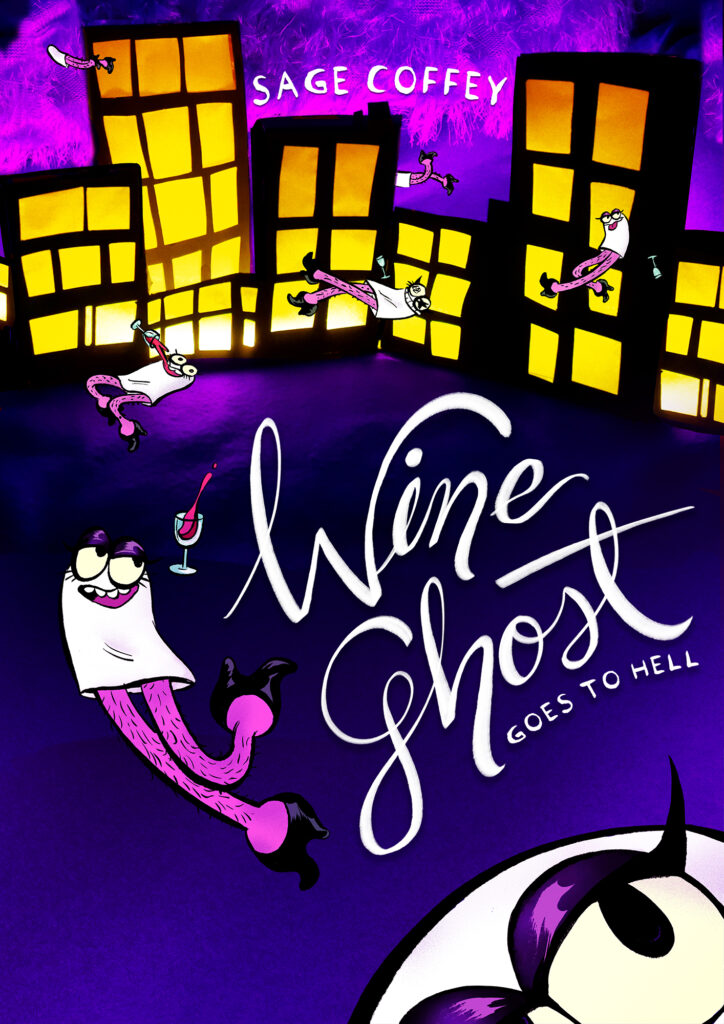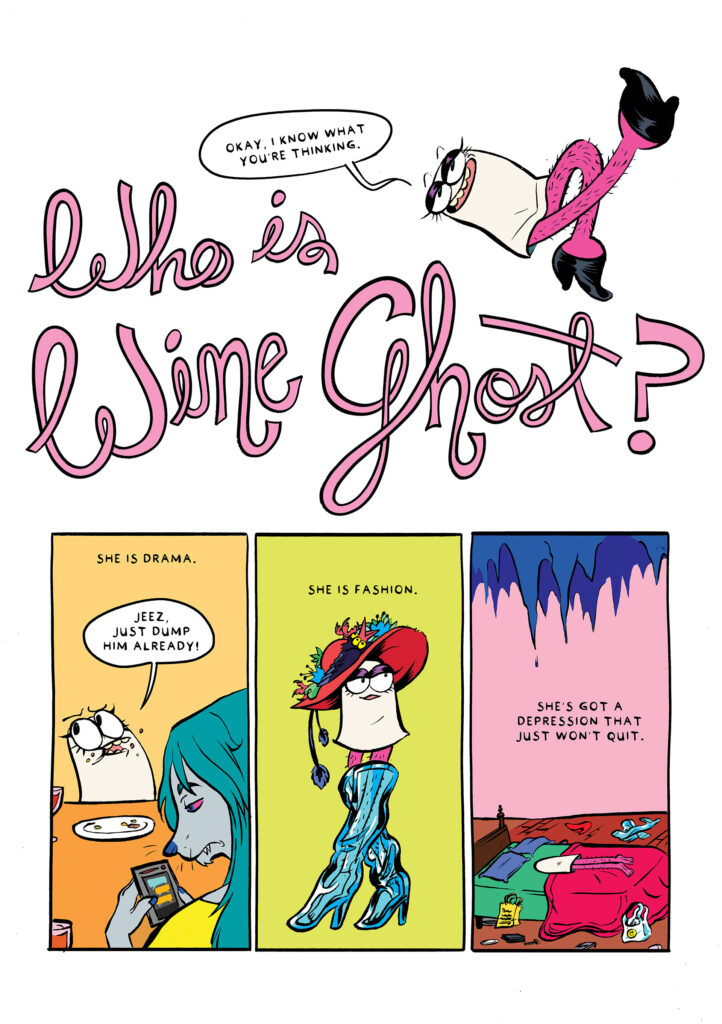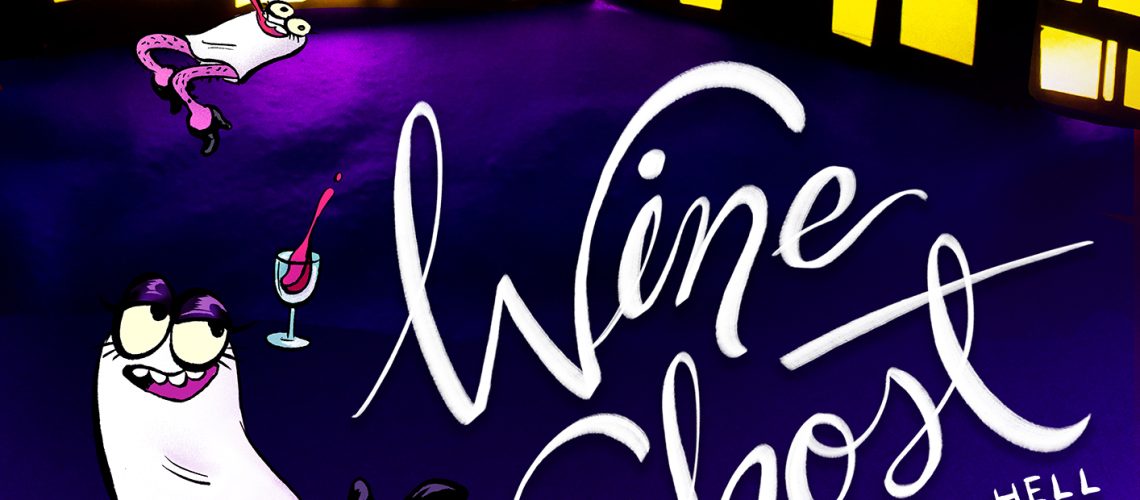When I was in my twenties, there were particular friends-of-friends who I only ever ran into at parties. One was a young woman who drama tended to follow around. I think a lot of friend groups at that age have someone like her, at the margins if not at the core; the young woman who inevitably ends up drinking too much at parties, and crying in the bathroom when the guy she brought with her flirts with other women. Someone who’s sometimes sweet, and sometimes prickly, can turn between the two on a dime, and is a bit of a mess.
The one who was adjacent to my circle… well, I never knew her well, but I’m told she got herself together, as many people eventually do after tempestuous periods of dating the wrong people and maybe partying a bit too hard in our twenties. She’s fine.
But what about the people who don’t? What if one of those messy young women messed up too much, and ended up in an afterlife that was a lot like life – life, before she had a chance to get herself together and had to do all that complicated emotional work… in Hell?

Wine Ghost Goes To Hell
Author and Artist Sage Coffey
Editor Andrea Purcell
Publisher | Editor-in-Chief C. Spike Trotman
Art Director Matt Sheridan
Prepress and Additional Design Hye Mardikian
Wine Ghost Goes To Hell is an original graphic novel – albeit a brief one at about 80 pages.
(Comics doesn’t have a tradition of nomenclature like, say, graphic novella for shorter long-form works; heck, the term graphic novel is still widely used for fiction and non-fiction alike, which has been inconvenient for my friends who write long-form comics biographies and other non-fiction.)
It’s about Wine Ghost, a particularly disastrous disaster bisexual, and she’s in an afterlife that everyone refers to as Hell even though it… doesn’t seem bad?

Wine Ghost has been in Hell for a while – kicking around, making friends, being fabulous, drinking a lot – when an old friend who she clearly wishes had been more than a friend shows up on her doorstep. Sebastian is newly dead and looking for some help while he gets sorted post-life. Wine Ghost has a ton of complicated, unresolved feelings about Sebastian, all of which get dragged to the surface as their unhealthy dynamic resumes. Sebastian needs help finding a place, he doesn’t seem to be above using Wine Ghost’s feelings for him to get what he wants, and he definitely isn’t telling her everything.
Now, that brief synopsis – which, while it doesn’t do justice to the characters, their dialogue, or the depth of their interactions, is accurate – might lead you to wonder: If this is about a messy young woman and a complicated relationship, why Hell? Why not a slightly more realistic graphic novel, set among living people, rather than the device of an afterlife?
I admit it – I wondered that myself, briefly. But then you might as well ask, “Why write fantasy at all?”, right?
Firstly, no creator need ever apologize or justify concretizing the metaphor: Wine Ghost is in Hell, and making that explicit and literal is useful to the story.
Secondly, while comics as a medium doesn’t require fantastical characters and settings – there are many, many, excellent comics that are more grounded in realism – comics does excel at the fantastical. And Sage Coffey’s art really excels at the fantastical. The bright color palette, the astonishingly vivid character designs – Wine Ghost in particular is delightfully engaging and expressive as a character – and the inventive settings all work together. Otherwise mundane-seeming moments are full of energy, funny, and just fun to look at, and that allows the reader’s attention to stay focused on those moments, and absorb the subtler details of unspoken feelings and understated gestures and expressions.

Coffey, in other words, uses the big, bright, cartoony designs and layouts to sneak the feelings past your defenses, and boom: You care about this funny, messy, dramatic, kind of fucked-up dead girl.
So yes, let’s consider the big metaphysical question out of the way: You probably aren’t going to be reading Wine Ghost Goes To Hell for the theology. This definitely isn’t Dante’s Hell, or even Gaiman’s.
This is cartoon Hell – people can order pizza and shop and go to brunch and they need apartments, even if those apartments are inside the mouths of gigantic monstrous creatures or vast empty extradimensional spaces or in the back rooms of sex clubs. They need money and jobs (Wine Ghost doesn’t seem to have one, but she’s a disaster). Everything and everyone is weird and trippy-looking, but otherwise it’s like life. There are demons, but they’re just people. Nobody is being tortured, except by themselves and their undealt-with issues.
That’s why I was thinking about theology, about examples of Hell as a state of mind. I even read C. S. Lewis’s The Great Divorce in the hopes that it would better inform this review… only to find that I had kind of the wrong impression about the reality and meaning of Hell in The Great Divorce, and by that time it was too late to read any Sartre or binge The Good Place.
But I didn’t need to read Sartre either. Wine Ghost’s Hell isn’t other people. It’s maybe one other person who’s a manipulative dick, but most of all, most importantly, it’s herself. The only one keeping Wine Ghost in Hell, in the end, is Wine Ghost.
Rather than Hell being other people, Wine Ghost realizes that other people, the connections we have with them, the mutual support we share with them, those are what make the afterlife bearable. Building community… is, maybe, building Heaven?
Okay, maybe you’ll be reading Wine Ghost Goes To Hell for the theology after all.
Finally, I’d be remiss if I didn’t mention that this is a genuinely beautifully-designed graphic novel. The use of vivid pink edge-painting, just as one example, both thoughtfully reflects Wine Ghost as a character and is simply eye-catching and visually appealing (my wife, who read my copy of the book at my suggestion and offered running commentary about how she “didn’t trust Sebastian one bit”, liked the pink so much that she insisted that I mention it).
Sage Coffey has been published extensively as a cartoonist, comics creator, and illustrator, and has worked in video games, but this is their first long-form comics work. I hope it’s a format they return to, whether that’s more Wine Ghost (please!) or anything else, because Wine Ghost Goes To Hell is a funny, assured, and auspicious debut graphic novel, and I recommend it highly.







